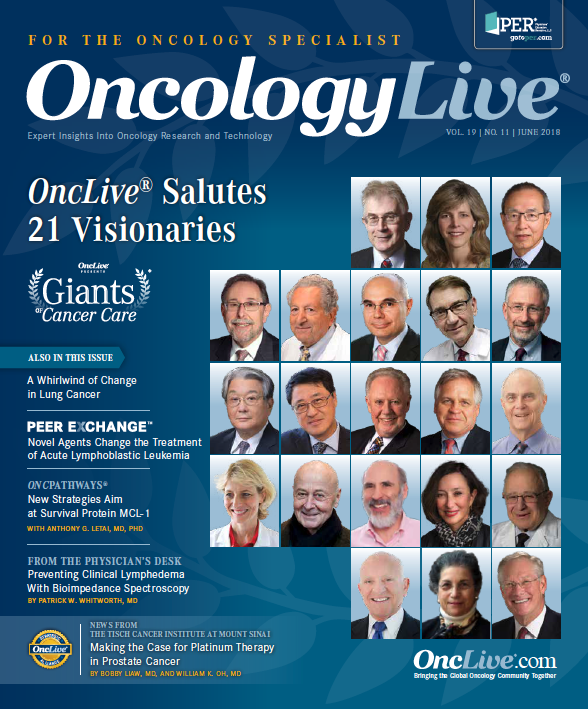Will Precision Medicine Displace the Randomized Trial?
Maurie Markman, MD, sheds light on the debate regarding the future direction of clinical investigation.
Maurie Markman, MD

Maurie Markman, MD
There is a most difficult struggle within the cancer research establishment—the often intense debate regarding the future direction of clinical investigation. The tension comes from the conflict between academic traditionalists and the newer set of targeted medicine enthusiasts. The traditionalists continue to firmly believe that the phase III randomized trial examining clinical outcomes within a defined population of patients with cancer should remain the only true gold standard for the evaluation of antineoplastic therapeutic efficacy. The opposing contingent’s views on optimal research design have substantially shifted to a focus on the need for clinical decisions to be far more personalized based on knowledge of the unique biology of the cancer within the individual patient (aka, precision medicine).
Molecularly Targeted Strategy
It should be acknowledged that many who support the need for randomized studies fully recognize that in certain settings, biologically precise data are realistically not possible to obtain (at least not within a period of time acceptable to society), but this reluctant acceptance comes with the loudly proclaimed caveat that any other form of evidence is of far less quality and value. Two recently published peer-reviewed cancer research efforts help to define the divergent views.The first paper presents data from a basket trial, MyPathway, designed to explore the potential clinical utility associated with the off-label use of several commercially available molecularly targeted antineoplastic agents.1 (Note: My employer, Cancer Treatment Centers of America, participated in this trial, and I am a member of the sponsoring company’s [Genentech] gynecologic cancer speaker’s bureau.) The study involved 251 patients with 35 different tumor types; 230 patients were evaluable for response or discontinued treatment before they could be evaluated. This trial focused on an objective evaluation of off-label drug use. One-quarter of the population achieved an objective response, including 14 (38%) of 37 patients with colon cancer whose malignancies overexpressed the HER2 receptor and 6 (43%) of 14 patients with non—small cell lung cancer and a BRAF V600 mutation who were treated with a specific rationally considered molecularly targeted antineoplastic strategy.1
Traditional Approach
Investigators were able to report early results from these targeted cohorts. They believe the results may help confirm the validity of administering targeted therapy based upon molecular aberrations in multiple tumor types and encourage additional studies.To represent the opposite perspective, one would be hardpressed to find a better example of the search for statistical certainty regarding a particular question in clinical oncology than the results of the international IDEA study designed to determine the utility of 3 versus 6 months of adjuvant oxaliplatin-based (folinic acid, fluorouracil, oxaliplatin [FOLFOX]; or capecitabine, oxaliplatin [CAPOX]) chemotherapy for stage III colon cancer.2
This analysis, which not unexpectedly appeared in a very influential medical journal, included 12,834 patients who experienced 3263 events of recurrence and involved the prospectively planned combined analysis of 6 phase III randomized trials conducted in 12 countries. The initiative required approximately 11 years from concept and trial initiation to final publication (June 2007 to March 2018). And for all this effort, the final conclusion was that “noninferiority of 3 months of treatment versus 6 months was not confirmed in the overall study population.”2
However, with a median follow-up of 42 months, the actual 3-year disease-free survival (DFS) percentage was 74.6% in the 3-month treatment group versus 75.5% in the 6-month group—an overall difference of less than 1%.2 A subgroup analysis suggested that if capecitabine (CAPOX) were employed rather than 5-fluorouracil (FOLFOX), there was no statistically significant difference between the 3-month and 6-month adjuvant programs, while the 6-month regimen was superior when 5-fluorouracil was used (3-year DFS: CAPOX, 75.9% for 3 mo, 74.8% for 6 mo; FOLFOX, 73.6% for 3 mo, 76% for 6 mo).
There are a number of issues that challenge both the assumptions and conclusions associated with this massive clinical trials effort. First, for both the FOLFOX and CAPOX regimens, one must consider the rather striking toxicity differences observed between the 3-month and 6-month programs. For example, overall, the percentage of patients who experienced clinically relevant neuropathy (>grade 2) was 3 times greater in the 6-month versus 3-month treatment programs. And for the FOLFOX program (in which 6 mo was concluded to be superior to 3 mo), there was a 6-fold increase in grade 3/4 peripheral sensory neuropathy associated with the longer treatment regimen (2.5% vs 15.9%).
Second, despite the fact that all 6 trials were randomized, there was considerable heterogeneity in the specific regimens that were used. For example, in several of the trials, physicians could employ 1 of 2 versions of FOLFOX and make individual decisions regarding the nonrandomized components of the treatment programs.
Finally, we come to probably the most important component of the trial that demands comment, and this relates to the prospective decision-making process regarding what level of difference in risk of recurrence might be acceptable for the 3-month program to be considered an acceptable alternative to the standard- of-care 6-month strategy and, specifically, how the extent and severity of clinically relevant treatment-related toxicities might influence this determination.
One might have considered it appropriate to have asked a reasonably large population of patients with colon cancer who had actually received adjuvant chemotherapy (and as a result likely understood the impact of treatment-associated adverse events) what magnitude of difference would have been acceptable to them to avoid a hypothesized reduction in adverse events? With this information, one might have then determined the extent of difference that would have been permitted for the shorter infusion to have been considered statistically noninferior. However, according to the peer-reviewed publication, the decision regarding what was a clinically acceptable decrease in 3-year DFS to define noninferiority was determined by a consensus among the study collaborators themselves.2 In 2007 this appears to have been acceptable. But would we agree to this decision-making process today?
Perhaps it is time to consider changes not only in the clinical trials paradigm but also to the locus of control for how we determine answers to such questions.
References
- Hainsworth JD, Meric-Bernstam F, Swanton C, et al. Targeted therapy for advanced solid tumors on the basis of molecular profiles: results from MyPathway, an open-label, phase IIa multiple basket study. J Clin Oncol. 2018;36(6):536-542. doi: 10.1200/JCO.2017.75.3780.
- Grothey A, Sobrero AF, Shields AF, et al. Duration of adjuvant chemotherapy for stage III colon cancer. N Engl J Med. 2018;378(13):1177-1188. doi: 10.1056/NEJMoa1713709.




